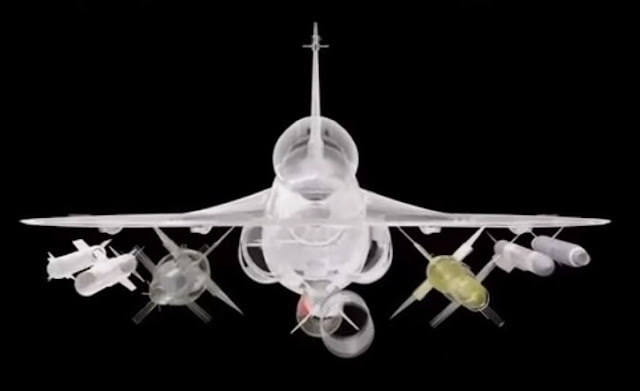Medium Weight Fighter - TEDBF/ORCA/MWF
Both Navy and Indian Air Force are going to need a fighter jet to secure our skies both near land borders and maritime coast. This can be the main peace time workhorse to guard Indian skies. Navy calls its version Twin Engine Deck Based Fighter (TEDBF), while Air Force can call it as Medium Weight Fighter (MWF) or Omni Role Combat Aircraft (ORCA).
Here, the need is to make a fighter using the existing research on Tejas Mk2 and AMCA.
We are reaching the goal of making our own Multi-role fighter with Tejas Mk 2. At present it has been designed to be a single engine jet with General Electric F414-GE-INS6 turbofan, 58.5 kN thrust dry, 98 kN with afterburner.
The present expected weight of Tejas Mk2 is as follows:
1. Gross Weight: 11,300 kg
2. Max Take Off Weight: 17,500 kg.
That means payload capacity is 6,200 kg.
But, Tejas Mk2 being a single engine fighter cannot be used by Navy as Twin Engine Deck Based Fighter. Similarly, Air Force cannot make Mk 2 in large numbers based on imported GE engines. It needs to design a fighter jet either on indigenous Kaveri engine (when developed) or on an imported engine with similar specifications.
Here, Snecma M88-2 turbofan engines with 50.04 kN thrust each dry, 75 kN with afterburner come into picture.
They are already being used by Rafales inducted into IAF in 2020. The lucky coincidence is that Kaveri engine has already achieved these thrust characteristics with 52 kN dry thrust and 81 kN thrust with afterburner. The hurdles are in the reliability, engine life and weight of the indigenous engine. The weight of Kaveri engine is nearly 30% more than the Snecma engines.
This information is useful so we can build our Medium Weight Fighter jet keeping the imported French engines in mind and deliver it to both the Navy and Air Force.
As and when, India develops a similar engine then without much changes in design of MWF the indigenous engines can be used in it.
Considering the general characteristics of Tejas Mk2 and AMCA, the expected design parameters of MWF/TEDBF/ORCA come out to be as follows:
General Characteristics
- Crew: 1 or 2
- Length: 18 m
- Wingspan: 12 m
- Height: 4.5 m
- Wing area: 42 m2
- Airfoil: compound less canard, wing designed for static instability.
- Empty weight: 11,000 kg (expected)
- Gross weight: 16,000 kg (expected)
- Max takeoff weight: 25,000 kg (expected)
- Fuel capacity: 5,000 kg
- Powerplant: 2 × Snecma M88-2 turbofans, 50.04 kN thrust each dry, 75 kN with afterburner
Weight of each engine 897 kg. Canard surface area is expected to be 2 m2 each.
So, payload capacity is expected to be 9,000 kg similar to that of Rafale.
Expected Performance
- Maximum speed: 2,475 km/h OR Mach 2 at high altitude, 1,5000 km/h OR Mach 1.25 at low altitude
- Supercruise: Mach 1.5
- Combat range: 1,000 km with 75% load.
- Ferry range: 3,500 km with 3 drop tanks
- Service ceiling: 16,000 m
- g limits: +8 −3
- Rate of climb: 300 m/s
- Wing loading: 300 kg/m2
- Thrust/weight: 0.93 (100% fuel)
The Thrust/Weight ratio is expected to get better with higher thrust Kaveri engines if their weight gets lowered from 1,234 kg each to 900 kg each.
To summarize, Twin Engine Tejas Mk 2 can be made with our own engine GTX-35VS-Kaveri. As the reliability of this engine increases with scientific research and development, the aircraft can take on more roles. To start with it can play the role of an air superiority aircraft in peacetime. The flight envelope will expand with better engine characteristics, like thrust vectoring and ability to handle more stress.
MWF can become India's Multirole aircraft similar to Su-30 MKI or F-15 EX at the very least. So, MWF/TEDBF along with AMCA can provide 80% of operational needs of the Indian military. As we see the progress in Su-30, FA-18, F-15 the modernization will be more in avionics and electronics rather than in aerodynamics of the aircraft for future needs.
This way LCA-Tejas can morph into satisfying future needs of India with aircraft development programs taking on iterative and incremental progress with time.






Comments
Post a Comment